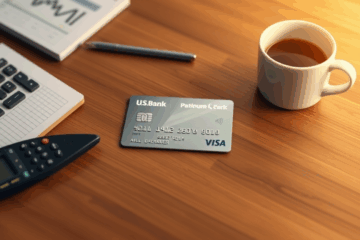Shop Online With Total Security and Peace of Mind
Online Security is more crucial than ever in today’s digital shopping landscape.
As more consumers turn to the internet for their purchases, understanding the potential threats is essential to protect both personal information and financial details.
This article will explore the importance of comprehensive online protection, share tips for secure shopping, and highlight advanced security solutions that safeguard against fraud.
Whether you’re using a desktop, laptop, or mobile device, ensuring a secure shopping experience allows you to enjoy the process of finding the best deals without the constant worry of online threats.
Why Online Shopping Security Matters
The digital marketplace continues to expand exponentially, reshaping how consumers purchase goods and services.
However, with this importance of security in online shopping has become paramount.
As the convenience of e-commerce attracts more shoppers, it also draws rising cyber threats that exploit vulnerabilities in personal data and financial transactions.
Today, cybercriminals employ increasingly sophisticated tactics, making consumers potential targets of fraud and identity theft.
Awareness of these dangers enables buyers to confidently navigate the digital landscape.
By understanding the risks and utilizing advanced security solutions, such as those described in the Shopify’s Retail Cybersecurity Trends, shoppers can confidently safeguard their information.
Implementing robust cybersecurity measures not only protects personal data but also preserves consumer trust and ensures the integrity of online transactions.
As consumers become more informed, they avoid pitfalls associated with digital shopping, experiencing both the assurance of a secure environment and the thrill of discovering exceptional deals.
Emphasizing security empowers shoppers to enjoy a seamless and worry-free online experience.
Recognizing Major Online Shopping Threats
Shopping online comes with its share of risks, but with knowledge, you can protect yourself.
A prevalent threat is phishing, where cybercriminals deceive consumers by sending emails or texts that appear to be from legitimate businesses.
These messages often contain links that lead to fake login pages, tricking users into providing personal or financial information.
For more on recognizing these scams, visit this Consumer Phishing Advice.
Furthermore, fake websites mimic authentic e-commerce platforms, luring users with low prices and enticing deals.
These sites collect credit card information without delivering products, as explained by extensive reports on Fake e-Shop scams.
Additionally, malware poses a significant danger to online shoppers.
Once downloaded, it can compromise personal data—often disguising itself as software updates or attachments.
Understanding these methods is crucial for mitigating fraud risks early.
Renowned cybersecurity organizations like Kaspersky highlight, “As one of the most prevalent schemes, online shopping scam websites use a fake or low-quality online store to collect victims’ credit card information”.
Awareness and vigilance are vital in safeguarding against these threats.
Practical Safety Tips for Every Shopper
Shopping online is convenient, but staying secure is crucial.
Follow these steps to protect your personal information: 1. Verify the URL: Always ensure the website has a secure connection.
Look for “https://” in the address bar, where the ‘s’ stands for secure, and check for a locked padlock icon that indicates a valid SSL certificate.
2. Use strong passwords: Create passwords with a blend of letters, numbers, and symbols.
Avoid easily guessed passwords like ‘123456’.
For password management convenience, consider using a password manager as suggested by OmniDefend.
3. Enable two-factor authentication (2FA): Add an extra layer of security by requiring a second form of verification.
This could be a text message code or an authenticator app.
Learn more about 2FA from CISA.
4. Monitor your bank statements: Regularly check your transactions for any unauthorized activity.
If you notice discrepancies, contact your bank immediately.
5. Pay with secure methods: Use credit cards or reputable payment platforms that offer fraud protection.
Relevant text: Shopping online is a growing trend, so prioritizing security ensures peace of mind.
By being proactive, you help safeguard your financial and personal data against online threats.
Stay secure
and enjoy a safer shopping experience.
Securing Your Payment Information
Protecting your payment information online hinges on understanding and utilizing encrypted payment gateways.
These gateways act as a secure channel through which your card data is transmitted during online transactions.
By encrypting your data, they ensure that sensitive information is safeguarded against unauthorized access and fraud.
According to Stripe’s Secure Payment Systems, encryption transforms your payment details into a secure format that is unreadable to anyone other than the authorized parties.
This is crucial when you enter your card data during checkout, preventing data breaches and phishing attacks.
To effectively protect your payment information, it’s vital to adopt these best practices:
- Use trusted payment platforms acclaimed for strong security protocols.
- Avoid saving card information on shared or public devices.
- Regularly update passwords to payment accounts.
- Enable multi-factor authentication for additional security.
Security expert
John Doe emphasizes that “leveraging advanced technologies like encryption not only protects consumers but also instills confidence in digital transactions.
“
Embrace these methods to ensure your online shopping remains safe and secure, allowing you to focus more on finding the best deals and less on security worries.
Leveraging Advanced Security Technologies
Leveraging advanced security technologies is essential for a safe online shopping experience.
Payment tokenization acts as a powerful shield by hiding actual card numbers behind non-reversible tokens.
Mastercard’s tokenization technology ensures that your sensitive card details remain secure, offering peace of mind as you browse and shop.
Meanwhile, virtual credit cards offer an innovative layer of protection.
These cards mask real payment details and are often disposable, which reduces the risk of fraud and misuse.
Virtual cards can be particularly beneficial in online environments, according to a study by Very Good Security, enhancing both security and financial control.
Moreover, real-time security apps play a critical role in protecting digital transactions.
These apps monitor activity and provide instant alerts for suspicious behavior, ensuring that users can take immediate action to thwart potential threats.
| Technology | Key Benefit |
|---|---|
| Payment Tokenization | Hides card numbers with non-reversible tokens |
| Virtual Credit Cards | Provides disposable and masked payment layers |
| Security Apps | Alerts users to suspicious activity in real-time |
By integrating these technologies—a blend of tokenization, virtual cards, and security apps—users can experience a secure and seamless shopping journey.
Stay ahead of online threats by adopting these advanced solutions.
In conclusion, prioritizing online security is vital for safe and enjoyable shopping experiences.
By understanding threats and employing effective protective measures, you can shop confidently and protect your personal information.



0 Comments